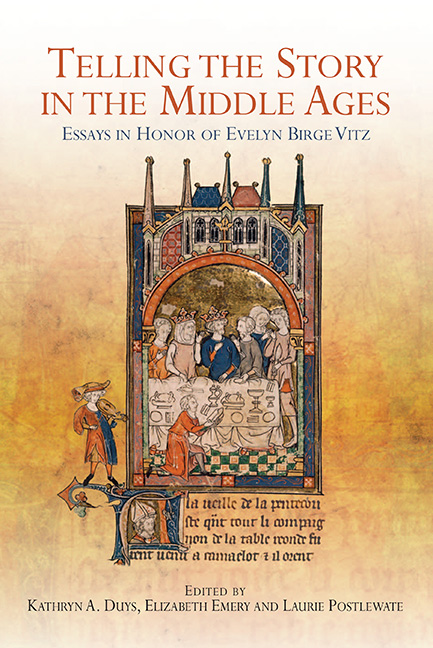Introduction
Published online by Cambridge University Press: 17 June 2021
Summary
The storyteller on the cover of this book stands on the margin, both inside and outside the story. Will he momentarily step into the hall to begin his entertainment at the feast going on inside? Or will he turn his eyes our way instead and launch into the Arthurian romance that has already begun within the frame to his right? Either way, his vielle is raised to play an overture whose melodies have grown so faint that we can now only imagine them. His eyes are trained on the courtly revelry beside him, as are the eyes of the kneeling page and the bishop peering up from below. For this brief moment and forever, these figures all ignore the readers – kings and ladies, monks and nuns, historians, scholars and critics – who watch and listen for the story to begin.
Reading the words on a manuscript page like this one is like watching a performance unfold. The elegant script twines across the page, carrying voices and backstories as dramatic as the message Tristan inscribed on the hazel branch for Iseut. The page is framed by vines among whose colorful leaves animals carry out their impertinent ruses. The reader warms to the drama by the light reflected in the miniatures’ burnished gold, just as the child Marcel warmed to his mother's voice as she read bedtime stories in Proust's exploration of memories both personal and medieval. There is no denying the enchantment.
Before the Gutenberg era, storytelling met critical and dynamic social needs related to governance and war, communication and education, faith and artistic creation, as well as a thousand gradations of entertainment to elicit everything from awe to raucous laughter among people of every age and station. Many feared that storytelling had died when it entered print, but Boccaccio is proof that it thrived in the new medium. As we pass into a world beyond Gutenberg, stories are told in tweets of 140 silent characters, and they stream on the internet, traveling great distances to vast audiences of solitary individuals, their responses illuminated by smartphones and tablets. Humanistic investigation into storytelling has likewise taken a web-based turn, as manuscript libraries the world over make their holdings available in high-quality digitizations, free and open to all on the internet.
- Type
- Chapter
- Information
- Telling the Story in the Middle AgesEssays in Honor of Evelyn Birge Vitz, pp. 1 - 10Publisher: Boydell & BrewerPrint publication year: 2015



